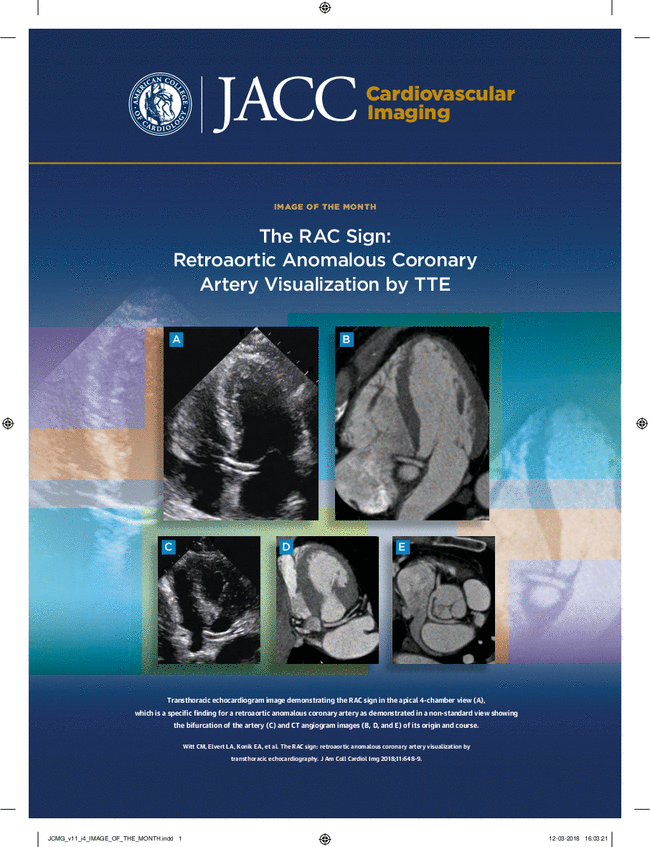疑似冠状动脉疾病患者接受解剖和功能成像检查后的降脂药物和疗效。
IF 12.8
1区 医学
Q1 CARDIAC & CARDIOVASCULAR SYSTEMS
引用次数: 0
摘要
背景:解剖和功能成像可识别冠状动脉疾病(CAD)的不同表型,这可能会对降脂药物(LLM)产生影响:本研究旨在评估疑似阻塞性冠状动脉疾病患者在进行联合解剖和功能成像后,降脂药物与长期预后之间的关联:连续性患者(n = 1,973;41%为男性;中位年龄:63岁)因怀疑患有CAD而接受冠状动脉计算机断层扫描血管造影术(CTA)。CTA 未排除阻塞性 CAD 的患者接受了正电子发射断层扫描缺血测试。收集患者购买 LLM 的数据直至 2 年,并在中位 6.7 年时评估死亡、心肌梗死和不稳定型心绞痛的综合终点:成像后,24% 的无 CAD 患者、51% 的非阻塞性 CAD 患者、72% 的 CTA 检查无心肌缺血的阻塞性 CAD 患者和 91% 的心肌缺血患者使用了 LLM。随访期间,LLM 的使用率有所下降,77% 的心肌缺血患者使用 LLM 达 2 年之久。在心肌缺血患者(6.1% vs 2.8%;P = 0.032)或无心肌缺血的阻塞性CAD患者(2.9% vs 1.4%;P = 0.004)中,使用LLM与较低的不良事件年发生率相关,但在无阻塞性CAD患者(1.5% vs 1.4%;P = 0.89)或无CAD患者(0.3% vs 0.3%;P = 0.68)中则不相关:由解剖和功能成像确定的 CAD 表型为 LLM 的使用提供了指导。心肌缺血和解剖阻塞性冠状动脉病变的存在与 LLM 的长期疗效相关。本文章由计算机程序翻译,如有差异,请以英文原文为准。
Lipid-Lowering Medication and Outcomes After Anatomical and Functional Imaging in Suspected Coronary Artery Disease
Background
Anatomical and functional imaging identify different phenotypes of coronary artery disease (CAD) that may have implications for lipid-lowering medication (LLM).
Objectives
The aim of this study was to assess the associations between LLM and long-term outcomes after combined anatomical and functional imaging in patients with suspected obstructive CAD.
Methods
Consecutive patients (n = 1,973; 41% men; median age: 63 years) underwent coronary computed tomography angiography (CTA) because of suspected CAD. Patients in whom obstructive CAD was not ruled out by CTA underwent ischemia testing by positron emission tomography. Data on LLM purchases were collected until 2 years, and the combined endpoints of death, myocardial infarction, and unstable angina pectoris were assessed at a median of 6.7 years.
Results
After imaging, LLM was used by 24% of patients with no CAD, 51% of patients with nonobstructive CAD, 72% of patients with obstructive CAD on CTA without myocardial ischemia, and 91% of patients with myocardial ischemia. The use of LLM decreased during follow-up, with 77% of patients with myocardial ischemia using LLM for 2 years. The use of LLM was associated with a lower annual rate of adverse events in patients with myocardial ischemia (6.1% vs 2.8%; P = 0.032) or obstructive CAD without myocardial ischemia (2.9% vs 1.4%; P = 0.004) but not in patients with nonobstructive CAD (1.5% vs 1.4%; P = 0.89) or no CAD (0.3% vs 0.3%; P = 0.68).
Conclusions
The CAD phenotype defined by anatomical and functional imaging guides the use of LLM. The presence of myocardial ischemia and anatomical obstructive coronary lesions were associated with a long-term outcome benefit from LLM.
求助全文
通过发布文献求助,成功后即可免费获取论文全文。
去求助
来源期刊

JACC. Cardiovascular imaging
CARDIAC & CARDIOVASCULAR SYSTEMS-RADIOLOGY, NUCLEAR MEDICINE & MEDICAL IMAGING
CiteScore
24.90
自引率
5.70%
发文量
330
审稿时长
4-8 weeks
期刊介绍:
JACC: Cardiovascular Imaging, part of the prestigious Journal of the American College of Cardiology (JACC) family, offers readers a comprehensive perspective on all aspects of cardiovascular imaging. This specialist journal covers original clinical research on both non-invasive and invasive imaging techniques, including echocardiography, CT, CMR, nuclear, optical imaging, and cine-angiography.
JACC. Cardiovascular imaging highlights advances in basic science and molecular imaging that are expected to significantly impact clinical practice in the next decade. This influence encompasses improvements in diagnostic performance, enhanced understanding of the pathogenetic basis of diseases, and advancements in therapy.
In addition to cutting-edge research,the content of JACC: Cardiovascular Imaging emphasizes practical aspects for the practicing cardiologist, including advocacy and practice management.The journal also features state-of-the-art reviews, ensuring a well-rounded and insightful resource for professionals in the field of cardiovascular imaging.
 求助内容:
求助内容: 应助结果提醒方式:
应助结果提醒方式:


